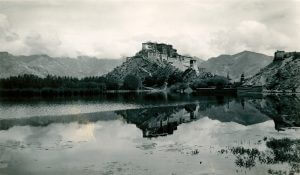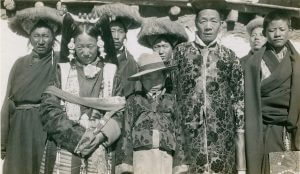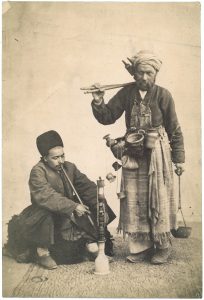New Digitization and New Discoveries in the Photograph Collection
The Society’s collection is diverse not only in the places and topics it covers, but also in the formats and media it contains. Once upon a time, the Society even held a museum collection, featuring natural history exhibits and specimens of Asian technology, weapons, and armour. That collection was finally dispersed a hundred years ago, but our heritage collection still contains a wide array of books, manuscripts, archives, artworks, maps, objects, photographs, sound and video recordings, and digital media.
Today, besides archives and digital media, the fastest-growing part of the Society’s collection are the photographs. In fact, the Society now has over 80 separate collections of photos, with our Digital Library providing a great way to make them available to a global audience. Recently, we have been extremely fortunate that Evgenia North has been volunteering at the Society to digitize some of these photographs and place them online.

The first new collection which Evgenia has digitized is a remarkable series of photos of Tibet. These were taken by Lieutenant-Colonel Fleming Mackenzie, who commanded the Escort to the Trade Agent in Tibet in 1938-9. Besides stunning views of the Himalayas, Mackenzie’s collection contains many rare views of Tibetan people and places, including numerous scenes from the capital, Lhasa, which are now available to researchers around the world. The Fleming Mackenzie collection was donated to the Society last year by his daughter, Mrs Ann O’Neill, and we are particularly pleased that the collection has been digitized and placed online so soon after its accession to our holdings. You can find the images online here.

The second collection which Evgenia has digitized is an unexpected treasure, formerly misidentified as a series of photos from India. In fact, the collection is a series of staged photographs of trades and types in late Qajar and early Pahlavi Iran, taken by noted photographer Antoin Sevruguin. Sevruguin travelled widely in Persia and, receiving the patronage of Naser al-Din Shah, enjoyed access to many royal buildings and events. While many of the photographs Sevruguin made during his career have been destroyed or lost, a large collection can be found at the Smithsonian Institution. The seven prints which comprise the Society’s Sevruguin collection can now be seen online here.

You can learn more about how Evgenia discovered and identified the collection at the Society’s next Collections Evening, which will take place on Thursday 23 March. That will be preceded on Thursday 16 March with a lecture by RAS Medal recipient Robert Irwin, titled ‘Tales from the Mamluk Crypt: Predecessors of Modern Horror’. We hope you will be able to join us for these exciting occasions.
